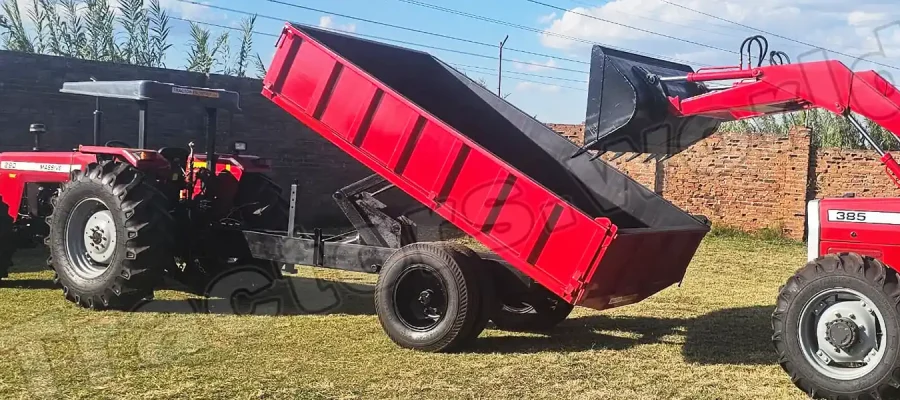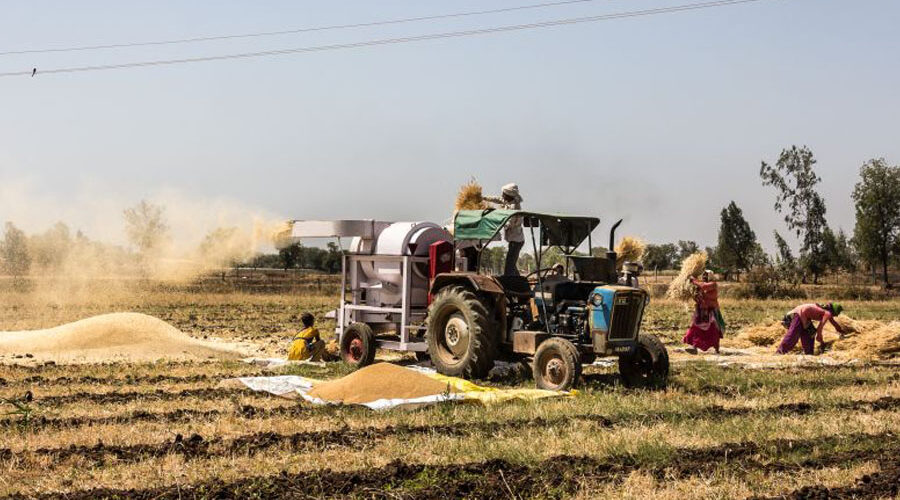
- December 11, 2025
- By: Massey Ferguson Zimbabwe
- in: Agricultural Machinery, Farm Equipment, Massey Ferguson Tractors

It is well-established that the output and productivity of farms, as well as the profitability of farms and their impact on the environment, are significantly impacted by the selection and subsequent usage of mechanical inputs. To what degree agricultural machinery is a limiting factor for Zimbabwe’s smallholder farmers may be gauged by whether or not they have access to basic farm implements and tractors.
Zimbabwe’s mechanization program is a government-led endeavor that was rolled out in stages. Although it is intended to increase output, the initiative is being fought against in Zimbabwe by some who see innovation as a threat. The length of the program’s continuation, however, remains unknown. Despite efforts to increase efficiency and productivity in the country’s agriculture by mechanizing processes, Zimbabwe’s overall agricultural output has been dropping for many years. Increases in land productivity, as measured by the area of land used for agricultural production, were the only notable difference. Market availability, production levels, infrastructure growth, asset ownership, agricultural best practices, contract farming, land tenure security, technical capability, extension services, labor and skills, value addition, and credit are all influenced by mechanization.
The use of agricultural power or agricultural machinery is crucial. As an agricultural input, mechanization has been shown to be more expensive to operate in Zimbabwe than other inputs. More and more people are becoming aware of the need of raising farm labor productivity. Unfortunately, the word “mechanization” is often used in a very restricted sense, and its true objective, namely increasing the productivity of land and labor, is often not widely understood. To acknowledge not just the significance of manual labor and hand tools, draft animals, and mechanical power, but also other difficulties associated with a labor scarcity, the phrase “Farm Power” or “Labor Productivity Enhancing Technology” would be more suitable than “agricultural mechanization.” Mechanization aims to increase agricultural production by making better use of available land. Therefore, machinery is a supplementary input necessary for increasing crop yields.
Farmers in Zimbabwe may improve their land and labor productivity, farm revenue, environmental impact, and overall quality of life by increasing or decreasing their use of agricultural machinery. To that end, it is necessary to provide standard farmed mechanization to meet the demands of the farmers. This includes being suitable for usage on small farms since most farmers in Zimbabwe own only tiny plots of land due to the fragmentation caused by the Fast Track Land Reform (FTLR) Program. It is important to emphasize technology that has a simple design and can be used in a variety of farming applications. If sustainable agriculture and food security are to be accomplished in Zimbabwe, the country’s focus on mechanizing small farms must be grounded in a well-thought-out plan that takes into account the farmers’ real needs and objectives.
Zimbabwe is home to a large quantity of unused agricultural machinery and related infrastructure. One possible explanation is that the intended recipients are unable to make use of the facilities. The government has implemented programs to help farmers afford the necessary farm implements to keep farming, increase farm efficiency, and boost crop yields. Some farms need new layouts so that existing facilities could be used more efficiently.
Taking a systems-based approach will allow Zimbabwean farmers to create a new mechanization system that more effectively addresses all of the agronomic requirements of the crop as a whole. Modern agricultural machinery relies heavily on favorable weather conditions. Wet soils make tractor maneuverability difficult; sprayers are useless in strong gusts, etc. Potentially, more jobs might be completed under suboptimal settings with the help of smaller, less obtrusive technology. The system design should include redundant, self-checking components to provide smooth degradation.
Agricultural mechanization has to be included in rural development plans. The accessibility of fields, the breadth and strength of bridges, and the size and layout of the fields should all be considered when designing irrigation and drainage systems. However, it is important to consider the economic and financial ramifications of the many alternatives for increasing land and worker productivity when developing an agricultural mechanization plan. Proposing mechanization when there are viable alternatives to it is not always the best course of action.
You can find a wide selection of tractors, including popular brands like Massey Ferguson tractors at Massey Ferguson Zimbabwe, one of the premier tractor dealers in Zimbabwe. There is a variety of agricultural machinery and farm implements available at Massey Ferguson Zimbabwe that might be useful to farmers in Zimbabwe. Massey Ferguson Zimbabwe is a one-stop-shop for the agricultural needs of Zimbabwe’s farmers, stocking a wide variety of tractor models and other tools for the field. Tractor tools are durable and built to last for a long time.
As it aids in harvesting, preparing agricultural land for agriculture, and protecting agricultural land, farmers who utilize this agricultural technology save time, resources, and money by doing fewer tasks. The above advantages are only the icing on the cake for farmers who invest in high-quality agricultural machinery: they will also notice an increase in crop yield.

Post a Comment